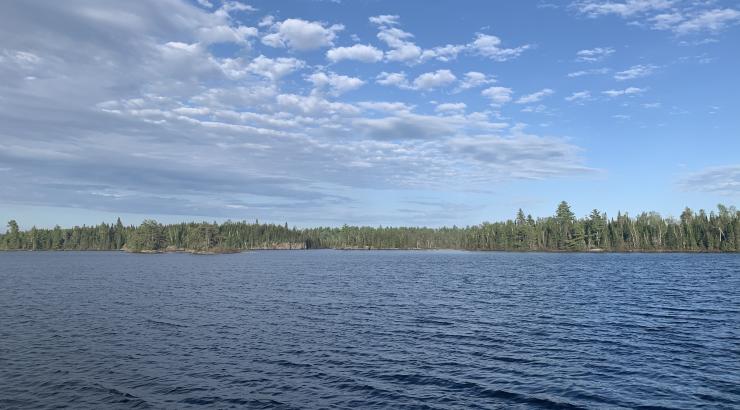The plastic sign posted to a tree in our campsite reads: "ALL FISH MUST BE RETURNED TO THE WATER IMMEDIATELY. FISH CONTAMINATED WITH PCBs DO NOT EAT." Paddling through a superfund site is not typically part of a canoe trip, but on day 73 and 74 of our journey from Ely, Minnesota to Washington D.C., that's where we find ourselves.
My wife Amy and I are about 1,500 miles into a 100-day, 2,000-mile expedition to protect the million-acre Boundary Waters Canoe Area Wilderness from the threat of sulfide ore mining. We departed from the Voyageur Outward Bound School on the Kawishiwi River on August 24, 2014 where a flotilla of 20 canoes joined us on the water for the first mile. We paddled right past the proposed mine site of Twin Metals and followed the flow into the pristine Boundary Waters to begin our journey.
74 days later we feel like we are on another planet. Giant machines scoop up black gunk from the bottom of the Hudson River and load it into barges as we canoe past. We have paddled into a $2 billion superfund site that has plagued the Hudson River for the last 40 years.
It's ironic because the place we are paddling to protect is being threatened by a series of proposed sulfide ore mines, which the EPA calls the nation's most polluting industry. Will our home on the edge of the Boundary Waters look like this some day? In the Boundary Waters I just dip my cup into the middle of the lake as we paddle along when I am thirsty. Here on the upper Hudson, I don't even want to touch the water we're gliding across.
Experiences like this make us realize what a truly special place the Boundary Waters Canoe Area Wilderness really is. The pristine natural beauty of the Boundary Waters has inspired awe for generations. It is among the United States' most accessible Wilderness areas, and for 50 years has remained America's most visited Wilderness. It is also a crucial driver of the economy in Northeastern Minnesota where tourism supports 18,000 jobs and $800 million in sales annually.
If you are concerned about protecting fresh water and want to stop sulfide-ore mining on the edge of the Boundary Waters Canoe Area Wilderness, please take a moment to sign the petition that Amy and I will be delivering to our federal government when we arrive in Washington, D.C. on December 3rd.
And if you are in the DC area, please join us at Patagonia Washington DC on Tuesday, December 2nd for a free slideshow and film screening. The event kicks off at 7pm. There will be refreshments and live music from Hollertown.
Minnesota guides and environmental educators Amy and Dave Freeman have traveled over 30,000 miles by canoe, kayak and dogsled, but they call Northeastern Minnesota home. Through their non-profit Wilderness Classroom, they connect, inspire and educate over 85,000 students around the globe using an interactive web platform. In 2014, they were named National Geographic Adventurers of the Year.
Nate Ptacek is an avid wilderness paddler, a former BWCA canoe outfitter and a member of the video team here at Patagonia. He directed, shot and edited the film featured in this post, a volunteer effort made possible through Patagonia's Environmental Internship Program for employees. This post was republished from Patagonia's The Cleanest Line blog. For more on this issue, check out Nate's previous post, "A Watershed Moment for the Boundary Waters Canoe Area Wilderness."



